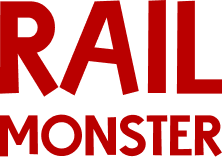Tourist Guide to Using KTX Trains
If you're planning to travel across South Korea quickly and comfortably, the Korea Train Express (KTX) is your best bet. This guide walks you through everything—from booking tickets to arriving at your final destination—with tips and comparisons to help you choose the best travel option.
Last updated: 23.06.2025
Last updated: 23.06.2025
The Korea Train Express (KTX) is South Korea’s premier high-speed rail service, launched in 2004 to connect major cities across the country in record time. Reaching speeds of up to 305 km/h (190 mph), the KTX dramatically cuts travel time—for example, the ride from Seoul to Busan takes just 2.5 hours compared to 5+ hours by car or bus. It's part of the broader Korail network and is known for its safety, punctuality, and modern onboard experience.
It competes directly with the SRT (Super Rapid Train), a similar high-speed service run by a different operator. If you’re trying to decide between the two, a ktx vs srt or Korea train comparison can help clarify the best fit for your itinerary. In this post, we'll guide you through the full KTX experience—from booking to arrival—so you can travel confidently and comfortably.
Purchasing Tickets

Buying a KTX ticket is simple, with multiple options for both locals and foreigners. You can purchase tickets at any major train station in Korea, where English-friendly kiosks and ticket counters are available. Alternatively, online booking is fast and convenient via the official Korail website or mobile app. You can also book through third-party sites like Klook, which sometimes offer discounts for tourists.
Tickets can be reserved weeks in advance, and seat selections are usually available at no extra charge. First Class and Economy options are offered, with different price points and amenities. Payment can be made using Korean credit cards or international cards depending on the platform.
Tickets can be reserved weeks in advance, and seat selections are usually available at no extra charge. First Class and Economy options are offered, with different price points and amenities. Payment can be made using Korean credit cards or international cards depending on the platform.
During holidays or weekends, trains fill up quickly, so it's best to book early. While booking, you may notice another high-speed train option: the SRT (Super Rapid Train). Operated by a different company, SRT tickets must be bought separately and usually depart from Suseo Station in Seoul, not Seoul Station. If you're comparing KTX vs SRT, both are similar in speed and comfort, but the departure and arrival stations may affect your choice. For a full Korea train comparison, consider travel time, convenience, and connectivity to your destination. Additionally, keep in mind that Korail passes cannot be used on SRT trains, which may influence your decision as a tourist.

Boarding the Train
Once you’ve secured your ticket, arriving at the correct station is your next step. Major stations like Seoul Station, Yongsan, or Busan Station are well-marked and foreigner-friendly. Try to arrive at least 20–30 minutes before departure, especially if you’re unfamiliar with the station layout. There are clear signs in English directing you to the platforms, ticket counters, and waiting areas.
Security is minimal compared to airports, but expect to have your ticket checked as you enter the platform. There are no formal baggage checks, but random inspections can occur.
Security is minimal compared to airports, but expect to have your ticket checked as you enter the platform. There are no formal baggage checks, but random inspections can occur.
Make sure your printed or digital ticket is easily accessible. Platforms are usually labeled with your train number and car number, so follow the signage carefully. Boarding is organized and efficient. Passengers are expected to line up at designated points for their car number. Trains usually stop for just 2–3 minutes at each station, so be ready to board quickly. There is no assigned baggage check, but you're allowed to bring suitcases and bags as long as they fit in overhead racks or luggage storage areas near the doors. Oversized luggage may require special handling or a separate seat.
Quick Fact
- KTX trains can reach speeds of up to 305 km/h (190 mph), making them among the fastest trains in the world and allowing passengers to travel from Seoul to Busan in just 2.5 hours—less than half the time it takes by car.
The Train Ride

Once onboard, you'll notice the clean and modern interior of the KTX. Seats in Economy Class are comfortable and include tray tables, charging ports, and Wi-Fi in many cases. First Class offers larger seats, more legroom, and complimentary snacks or beverages. Bathrooms are clean and available in multiple cars, and some trains also include vending machines or water dispensers.
The ride is smooth and often very quiet. Most passengers use the time to nap, read, or work, so noise should be kept to a minimum. If you're traveling with children, try to keep them entertained quietly. Talking on the phone is discouraged in seating areas; instead, use the designated phone booths between cars.
The ride is smooth and often very quiet. Most passengers use the time to nap, read, or work, so noise should be kept to a minimum. If you're traveling with children, try to keep them entertained quietly. Talking on the phone is discouraged in seating areas; instead, use the designated phone booths between cars.
Food isn’t served unless you're in First Class, but you're welcome to bring your own snacks or drinks. Keep your area tidy, and dispose of trash in the bins located at the end of each car. For large luggage, use the storage areas rather than blocking aisles or seats. This is particularly important during busy travel times.
KTX offers a fast and scenic ride across the country. If you're conducting a Korea train comparison, the KTX is slightly more expensive than the SRT, but it's also better connected to downtown Seoul and other major stations. Depending on your priorities—price, location, or timing—both are solid choices.
KTX offers a fast and scenic ride across the country. If you're conducting a Korea train comparison, the KTX is slightly more expensive than the SRT, but it's also better connected to downtown Seoul and other major stations. Depending on your priorities—price, location, or timing—both are solid choices.

Arriving at Your Destination

When your train approaches your stop, announcements will be made in Korean and English. Make sure to gather your belongings a few minutes before arrival. Doors open for only a short time, so move quickly but safely to exit. Some stations are large and may require walking or navigating stairs and escalators, especially if you're transferring.
Follow the signs for "Exit" or "Transfer", depending on your next destination. If you're continuing your journey by subway, most KTX stations are connected to local metro systems. For example, Busan Station links directly to Busan Metro Line 1, while Seoul Station connects to Line 1 and Line 4. Taxis, buses, and rental car services are also readily available outside most stations.
Follow the signs for "Exit" or "Transfer", depending on your next destination. If you're continuing your journey by subway, most KTX stations are connected to local metro systems. For example, Busan Station links directly to Busan Metro Line 1, while Seoul Station connects to Line 1 and Line 4. Taxis, buses, and rental car services are also readily available outside most stations.
Luggage trolleys can be found near platforms, and staff are usually around to assist if needed. If you've traveled a long distance, take a moment to regroup at the station’s rest areas or cafés before continuing. Many KTX stations are also shopping and dining hubs, so you might want to explore a bit.
If you're planning on catching another train, make sure to check your connection details in advance. Transfers between KTX and SRT aren't always seamless since they use different operators and stations. Keep this in mind if you’re doing a Korea train comparison that involves multiple legs of travel.
If you're planning on catching another train, make sure to check your connection details in advance. Transfers between KTX and SRT aren't always seamless since they use different operators and stations. Keep this in mind if you’re doing a Korea train comparison that involves multiple legs of travel.

Tips & Etiquette

To ensure a pleasant experience for yourself and others, it’s good to understand Korean train etiquette. As mentioned earlier, quiet is expected on board—use headphones and avoid loud conversations. Eating is allowed, but avoid strong-smelling foods like kimchi or instant noodles.
Keep the aisles clear of bags and personal items. If traveling with children or groups, be mindful of noise and movement within the train. Clean up your area before leaving the train, and don’t leave behind trash or personal belongings. If you’re unsure where to sit, just ask a conductor or check the digital displays above each seat.
Keep the aisles clear of bags and personal items. If traveling with children or groups, be mindful of noise and movement within the train. Clean up your area before leaving the train, and don’t leave behind trash or personal belongings. If you’re unsure where to sit, just ask a conductor or check the digital displays above each seat.
You’re not allowed to switch cars during the ride unless you're visiting the bathroom or going to the vending machine area. Taking photos is fine, but avoid blocking walkways or disturbing other passengers. Smoking is strictly prohibited anywhere on the train or platform.
If you're comparing KTX vs SRT, keep in mind that both follow similar etiquette and policies, but departure stations and amenities may vary slightly. KTX tends to be more central for tourists, while SRT may be more convenient for travelers based in southern Seoul.
If you're comparing KTX vs SRT, keep in mind that both follow similar etiquette and policies, but departure stations and amenities may vary slightly. KTX tends to be more central for tourists, while SRT may be more convenient for travelers based in southern Seoul.

Tourist Guide to Using KTX Trains: Travel Tips
Travelers should book KTX tickets in advance, especially during weekends or holidays, to ensure a reserved seat. Foreign tourists can save money by using the Korail Pass, which offers unlimited train travel for 1 to 7 days.
- Arrive EarlyIt’s always a good idea to arrive at the KTX station 20–30 minutes before your departure. This gives you time to purchase tickets, find your platform, and board the train without stress.
- Check the ScheduleMake sure to double-check your departure time and the schedule before your trip, especially during busy seasons or holidays. You can easily access real-time schedules via the official website or mobile app.
- Luggage StorageKTX trains offer spacious luggage racks for larger items, and smaller bags can be stored overhead or under your seat. Make sure to keep your valuables with you in your seat, especially during crowded trips.
- Use the T-money CardMost KTX trains offer free Wi-Fi, so you can stay connected while traveling. This is great for checking your itinerary, browsing the web, or catching up on work during your journey.
- Use the T-money CardFor added convenience, the T-money card can be used not only for buses, subways, and trains but also for vending machines on board. It’s a great way to pay for local transportation in South Korea.
- Respect the Quiet ZonesSome KTX trains feature designated quiet zones. Be considerate of fellow passengers by avoiding loud conversations or phone calls in these areas.
Riding the KTX train in Korea is one of the fastest and most efficient ways to travel the country. With a little preparation, your journey will be smooth, comfortable, and even enjoyable. From booking your ticket to finding your way out of the station, each step is designed to be user-friendly—even for non-Korean speakers. If you're wondering how to use KTX, the process is straightforward and accessible for both seasoned travelers and first-timers alike.
